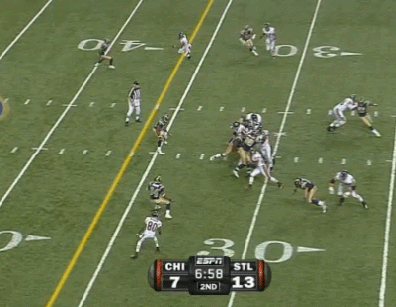- Home
- Symmetry Blog
- Big Game With 3-D Maps and Field Markers
How Graphics Processors, Sensors, and Video Codecs Contribute to the 'Big Game' With 3-D Maps and Field Markers
About Symmetry Electronics
Established in 1998, Symmetry Electronics, a Division of Braemac, is a global distributor of electronic components and systems. Combining premier components and comprehensive value-added services with an expert in-house engineering team, Symmetry supports engineers in the design, development, and deployment of a broad range of connected technologies.
Exponential Technology Group Member
Acquired by Berkshire Hathaway company TTI, Inc. in 2017, Symmetry Electronics is a proud Exponential Technology Group (XTG) member. A collection of specialty semiconductor distributors and engineering design firms, XTG stands alongside industry leaders TTI Inc., Mouser Electronics, and Sager Electronics. Together, we provide a united global supply chain solution with the shared mission of simplifying engineering, offering affordable technologies, and assisting engineers in accelerating time to market. For more information about XTG, visit www.xponentialgroup.com.

Football’s yellow 1st & Ten® line debuted on ESPN in 1998 during an NFL game between the Cincinnati Bengals and the Baltimore Ravens, and has since become a ubiquitous part of watching a football game on television. However, displaying that line is a lot more complex than most people would assume. In fact, it has won multiple Emmy Awards for technical achievement. Varying field drainage pitches, changing weather conditions, camera angles and zooms, and other factors make each venue a unique challenge for broadcasters. Each game requires a tractor-trailer rig of specialized equipment, eight computers, and at least four people dedicated to the line.
The History of Virtual Graphic Insertion in Sports
Despite David W. Crain patenting the idea of an on-field marker in 1978, the 1st & Ten line wasn’t used until the Bengals vs. Ravens game on September 27, 1998. Sportvision, a private company, was responsible for this first broadcast, signing an exclusive deal with ESPN for the 1998 NFL season.
Prior to the gridiron, Princeton Video Image (PVI) and Sportvision had used virtual graphics in baseball and ice hockey. PVI used its Live Video Insertion System (L-VIS) to broadcast virtual advertising behind the home plate on a Trenton Thunder baseball broadcast in July 1995. In January 1996, Sportvision partnered with Fox to debut the FoxTrax system to help viewers follow the puck during the NHL All-Star Game. Later in 1996, PVI and Sportvision joined forces to showcase the technology during the World Series between the New York Yankees and the Atlanta Braves, but the demonstration was unsuccessful. A subsequent lawsuit and countersuit regarding patent infringement saw Sportvision and PVI settle in 2002 through a cross-licensing deal, and in 2010 Sportvision announced a purchasing and licensing agreement to commercially provide all PVI products and services to domestic and international market.
Today, in addition to the 1st & Ten line, Sportvision continues to provide viewing enhancements to the NFL, NBA, NHL, MLB, PGA, NCAA, PBA, MLS, tennis, horse racing, sailing, NASCAR, Australian Rules Football, and the Olympic Games.
So How Does it Work?
Before each season begins, a 3-D map is created of each field. Each field has a slope to assist drainage, so the curvature of the field needs to be taken into account to render the line accurately. The map needs to ensure exactly where each yard line sits with respect to the curvature of the field, and needs to know precisely where in the stadium the cameras will be situated.
All broadcast cameras are equipped with sensors and encoders, often built into the camera mount, to measure the location, tilt, pan, zoom, and focus linked to computers recalculating the camera’s relative perspective up to 30 times per second. The system needs to determine in real time which camera is live, whether it is moving or stationary, and what perspective is shown through the lens. Additionally, the system needs to sense and react when players, officials, or the ball cross the projected first down line or when graphics are superimposed by broadcasters or sponsors so the line is not visually interrupted. A total of eight computers are used to run the system: four SGI computers, one PC, and three computers that record and report broadcast camera data. Four people are also needed to ensure the system functions smoothly on game day: a spotter in the press box, an operator in the production truck, and two more operators on hand to make in-game adjustments such as accounting for snow or mud.
A detailed two-palette coloring system, inspired by the weather map on news programs, ensures that the line remains visible on the field, but does not show over people or objects as they move about the field. The field is processed as the first color palette, much like the green screen upon which the weather map is projected. The second color palette analyzes skin tones, player and referee jerseys, and the ball, and sends that information back to the system to help inform where to draw the line in relation to other elements on the field.
Once the system has determined exactly where the first down line should be drawn, the positional information and the raw video feed of the on-air camera are sent to a computer that draws the line 60 times per second. The line is then sent to a linear keyer to be superimposed onto the program video, which is delayed by a few frames in order to be accurately synchronized with the projected line.
Need help kicking off your own game? Symmetry has graphics processors, sensors, cameras, video codecs, and more to get your game going. Call us at (310) 536-6190, or contact us online.
